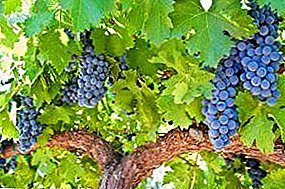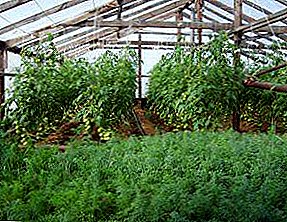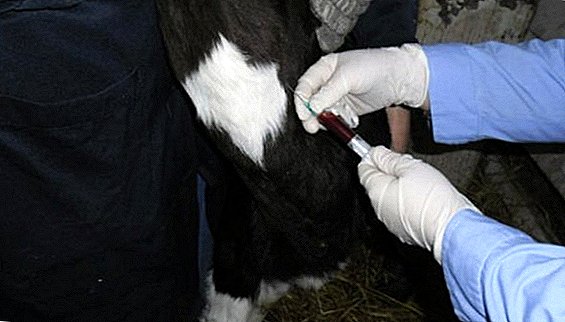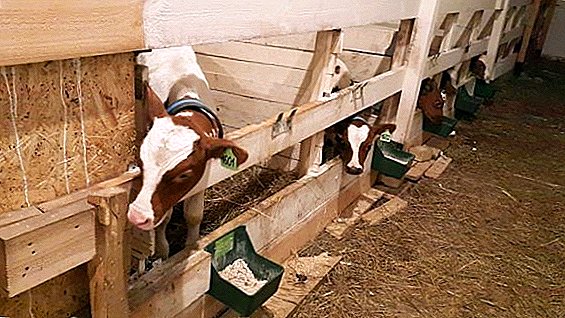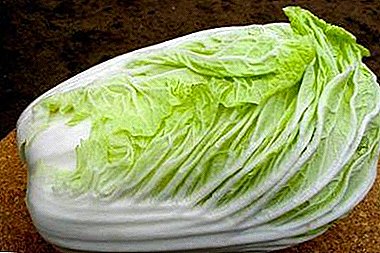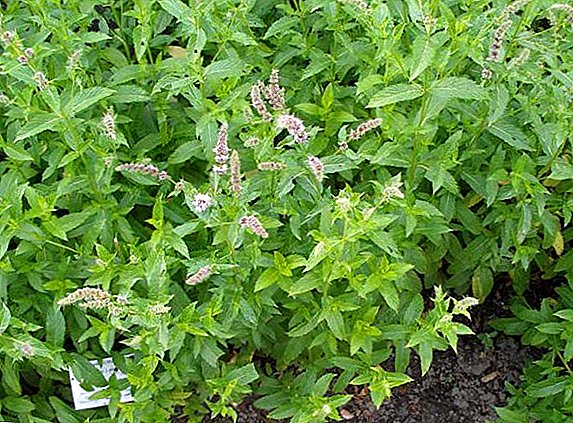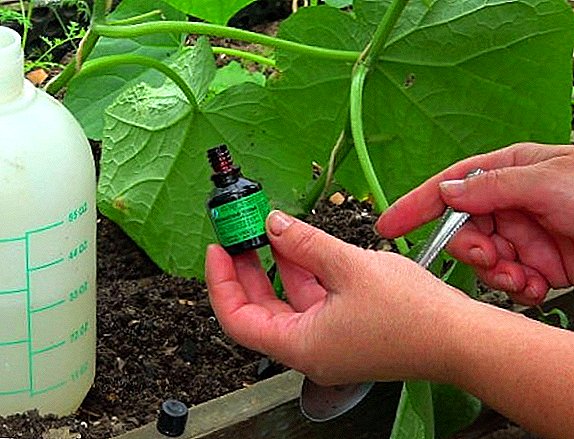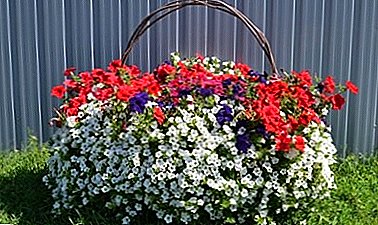
The red gerbera is considered to be the decoration of any home or garden. This is an unpretentious plant that has been popular among gardeners for many decades.
Due to the successful work of breeders of the red gerbera varieties, each year becomes more and more. In our article we will tell about the history of the origin and characteristics of this flower.
You will learn about the conditions of its cultivation, methods of reproduction and care for him. We can also watch a useful video on this topic.
History of
The history of the red gerbera began three hundred years ago. In the first half of the 18th century, Dutch travelers discovered bright, unusual flowers in southern Africa.
A little later, the botanist Jan Gronovius described an unknown flower and began to study it seriously. Since he had no name yet, the scientist gave him the name of his friend, the doctor Traugott Gerber.
The flowers found were of a wide variety of colors and shades, including red ones (you can find out what types of gerberas are known today).
Botanical description
The red gerbera is a perennial herb. Her leaves are large, hard, pointed at the ends.
 Assembled in the rosette, in length, as a rule, do not exceed 30-35 centimeters. The edge of the sheet can be both solid and serrated. Stems are long, sometimes pubescent.
Assembled in the rosette, in length, as a rule, do not exceed 30-35 centimeters. The edge of the sheet can be both solid and serrated. Stems are long, sometimes pubescent.
Peduncles tall, devoid of leaves, often pubescent. The flowers are collected in inflorescences-baskets of various sizes, Gerberas look like daisy flowers.
Edge reed flowers, they are larger and vibrant. Median - tubular, smaller.
Fruit - achene. On average, gerbera seeds are viable for six months.
Value
Red gerberas - sunny flowers, symbolizing joy, love of life. In the language of flowers, red gerberas express secrecy, modesty and purity. They are usually presented to the man, especially to the one to whom the donor has warm feelings.
Appearance and features
Red gerberas differ markedly depending on the variety.. Flowers can be both simple and double, and the size of the inflorescence varies greatly. The shape of the leaf plate can vary from wide to very narrow.
- Different varieties of pink gerbera.
- Features of reproduction, planting and care for orange gerberas.
Where and how to plant?
Red gerbera can be planted both at home and in the garden. In garden conditions, planting gerberas begins towards the end of winter. Seeds for seedlings are sown in special containers with a mixture of sand and compost. It is best to do this from January to March. Germination of gerbera seeds is low, so they are sown in large numbers (we described in detail here how to grow gerberas from seeds correctly). The first shoots appear after only one and a half to two weeks.
Important: You can not embed the seeds too deep, it greatly reduces the percentage of germination.
After the appearance of several leaves, seedlings can be transplanted into separate pots. Seedlings need regular watering.. However, it is impossible to allow an excess of moisture, as well as the ingress of water to the rosette - the plant may begin to rot.
Lighting and location
In open ground, seedlings can be planted after it stops threatening night frosts. It is best to choose a sunny, but not too hot place to prevent burns.
Window sills suitable for east or west are suitable for indoor varieties of red gerberas.. On the south side, the plant will have to pritenyat at noon.
Soil requirements
The soil for planting the red gerbera should be light, drained and contain enough inorganic fertilizers. With an excess of organics, flower stalks will be strongly drawn out.
How to care?
Caring for a red gerbera is not difficult. However, for the full development of the plant requires compliance with several conditions:
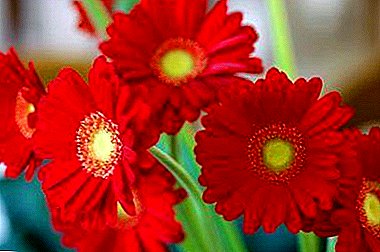 Abundance of light. The most favorable lighting for the gerbera is the morning and evening sunshine, in the afternoon it may be too hot. The room must be regularly ventilated - the flower does not tolerate stuffiness. In winter, it is desirable to provide gerbera with artificial lighting, this will increase the vital activity of the plant and prolong the flowering period.
Abundance of light. The most favorable lighting for the gerbera is the morning and evening sunshine, in the afternoon it may be too hot. The room must be regularly ventilated - the flower does not tolerate stuffiness. In winter, it is desirable to provide gerbera with artificial lighting, this will increase the vital activity of the plant and prolong the flowering period.- Temperature conditions varies depending on the season. In summer, the gerbera is satisfied with a temperature of 20-25 degrees, in winter it can be reduced to 16-17 without harm to the plant. At temperatures below 10 degrees the flower will plunge into a state of rest until a more favorable period.
- Watering should be regular, the plant does not tolerate drought. Best suited for this purpose cool defended water. It is necessary to water the gerbera with great care; it is undesirable to allow moisture to get to the root socket.
- Humidity. A wet environment will benefit the gerbera, so periodic spraying doesn't hurt. The main thing is to ensure that the inflorescences remain dry.
- Fertilizer. In the warm season, during the growth phase, the flower requires additional feeding with a high nitrogen content. In the period of flowering gerbera potassium fertilizers will be useful.
- Transfer (in room conditions). It is produced annually when the plant has faded and plunged into a state of rest. This requires a pot a few centimeters wider than the previous diameter, drainage of expanded clay or gravel and specialized soil for gerberas. The flower is removed from the old pot with a clod of earth and transplanted into a new one.
We recommend looking at the features of caring for a red gerbera:
Diseases and pests
Like all indoor plants, the red gerbera can get sick (read the most common gerbera diseases and how to combat them in this article). The reason for this may be the wrong content of the flower.
- Alternaria. The disease has a fungal nature. The leaves of the plant are covered with brown spots that brighten over time. In some cases, the disease can occur only yellowing of the leaves. In conditions of constant excess moisture stains become covered with dark bloom.Attention: The weaker the gerbera, the higher the likelihood of developing the disease.
- Gerbera Mosaic. Caused by a cucumber mosaic virus. The main feature is the appearance on the leaves of yellow-green spots of various sizes and shapes. Infection occurs through insects, such as aphids.
- Sclerotoniosis. Called the fungus. Manifested in the form of depressed spots on the surface of leaves, covered with light bloom. The fungus can persist in the soil for a long time.
- Mealy dew. Another type of fungal disease, which young plants are most susceptible to. Grayish plaque appears on the leaf petioles, develops and covers the plant as a whole. Without timely intervention, the gerbera inevitably perishes.
- Late blight. Manifested in the form of a gradual drying of the leaves, first from the outside, and then from the inside. Next begins rotting roots.
- Gray rot. Light bloom affects the inflorescences and leaves of the plant. The disease spreads through the soil and water.
- Aphid. Sucks the sap of the plant, multiplies with great speed. Spider mite Forms a thin web, able to braid a flower entirely.
- Whitefly larvae. They feed on plant sap throughout development.
- Why does the room gerbera turn yellow leaves and how to cure it?
- What is the reason why gerberas do not bloom and how to fix it?
Breeding features
There are three main ways of breeding the red gerbera: seed, grafting or dividing the bush.
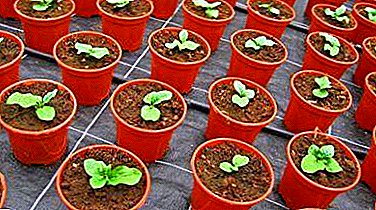 Seed propagation. This is the longest and most time-consuming way, so it is used infrequently. The period from planting seeds until flowering takes 9-10 months.
Seed propagation. This is the longest and most time-consuming way, so it is used infrequently. The period from planting seeds until flowering takes 9-10 months.- Cuttings. In this case, you will need a part of a gerbera stem with a leaf, and the maternal plant no more than three years old is best suited. In a wet heated soil after a week, young shoots will appear.
- Dividing bush. On the rhizome of a young gerbera, a neat, not too deep incision is made. Place the cut sprinkled with crushed coal and dry soil. New gerbera roots should appear in a month. When this happens, the plant is divided into two parts and planted in separate pots.
Details on how you can propagate gerberas at home and the necessary follow-up care, you can find in our article.
Thus, the red gerbera is perfect for both gardeners and houseplants. Low requirements and availability make it almost ideal for breeding and rearing.


 Abundance of light. The most favorable lighting for the gerbera is the morning and evening sunshine, in the afternoon it may be too hot. The room must be regularly ventilated - the flower does not tolerate stuffiness. In winter, it is desirable to provide gerbera with artificial lighting, this will increase the vital activity of the plant and prolong the flowering period.
Abundance of light. The most favorable lighting for the gerbera is the morning and evening sunshine, in the afternoon it may be too hot. The room must be regularly ventilated - the flower does not tolerate stuffiness. In winter, it is desirable to provide gerbera with artificial lighting, this will increase the vital activity of the plant and prolong the flowering period. Seed propagation. This is the longest and most time-consuming way, so it is used infrequently. The period from planting seeds until flowering takes 9-10 months.
Seed propagation. This is the longest and most time-consuming way, so it is used infrequently. The period from planting seeds until flowering takes 9-10 months.
